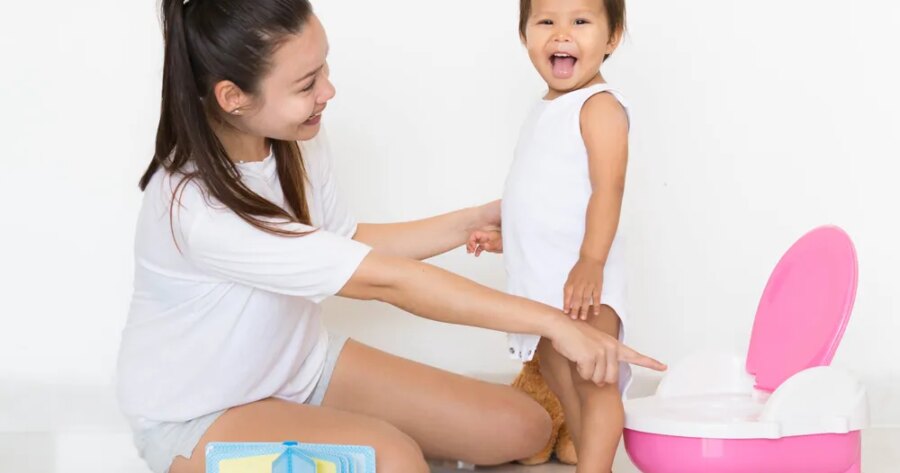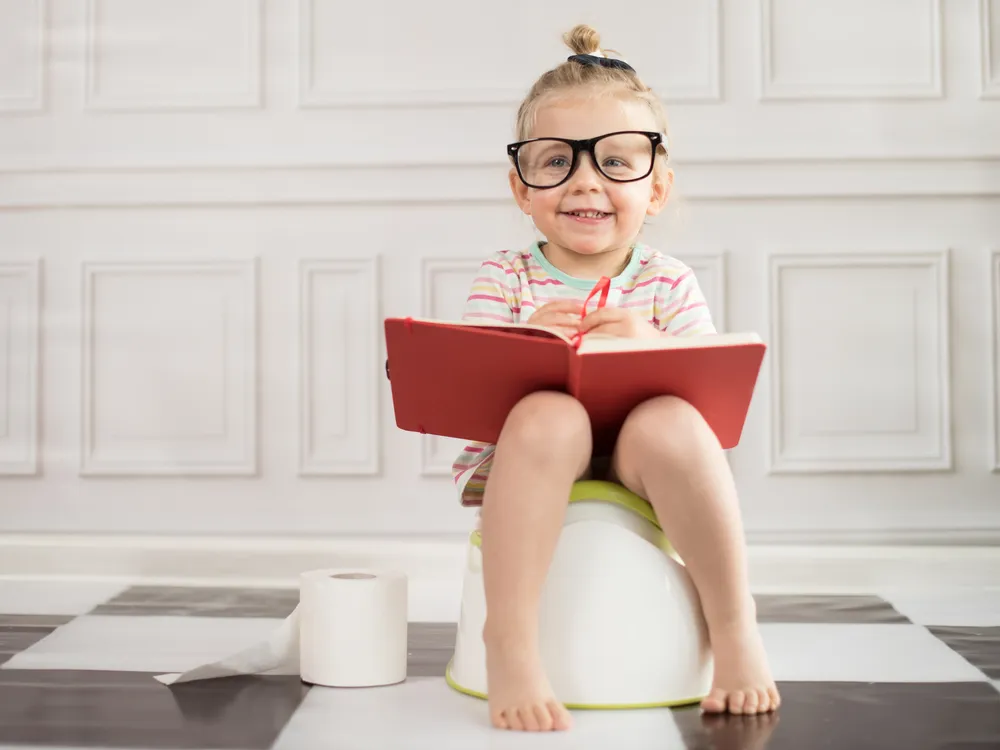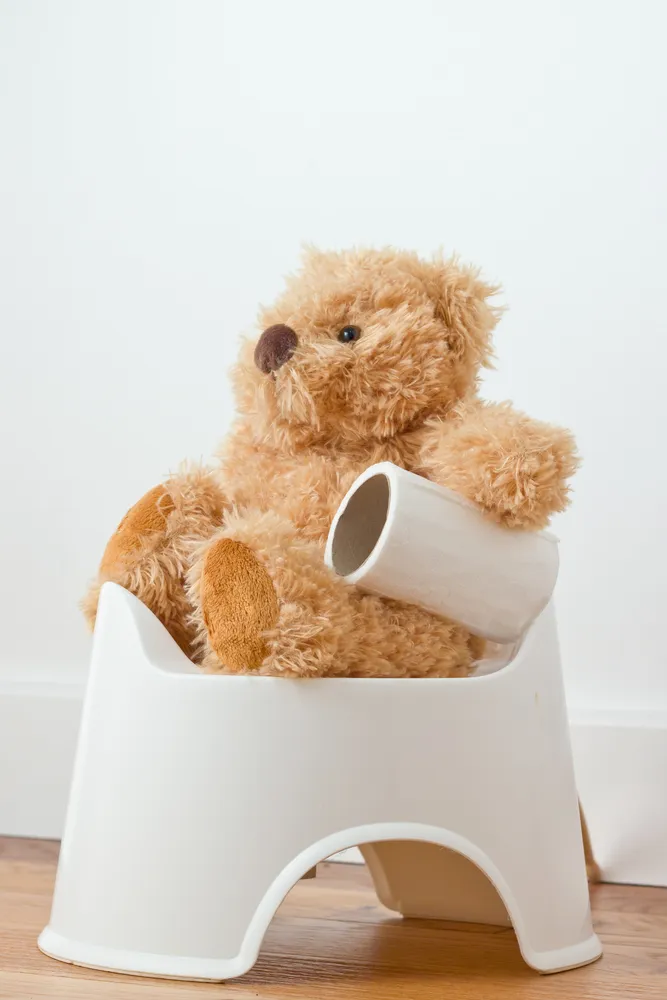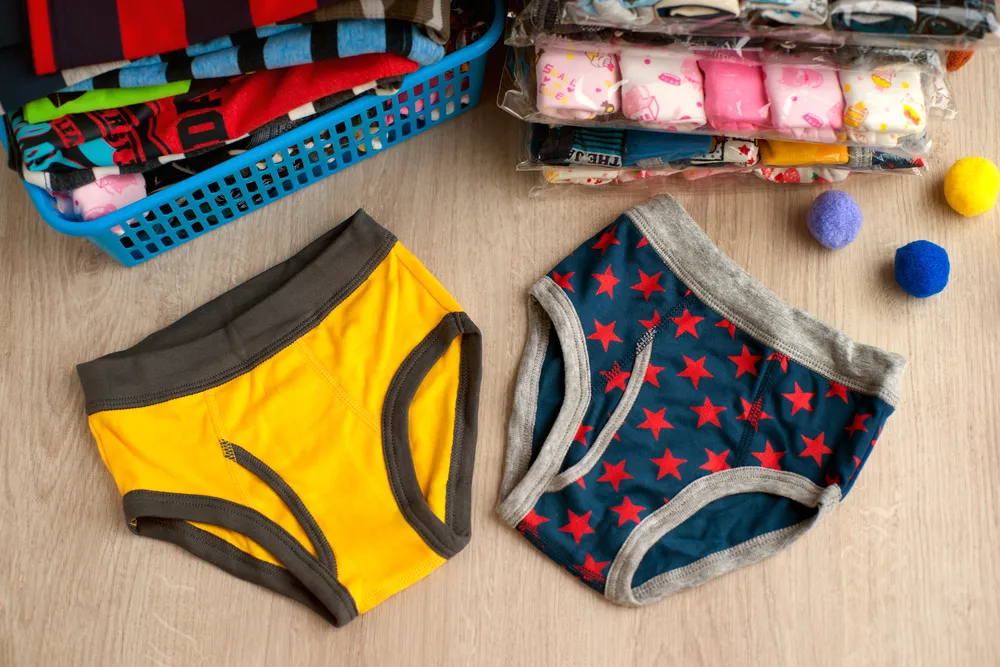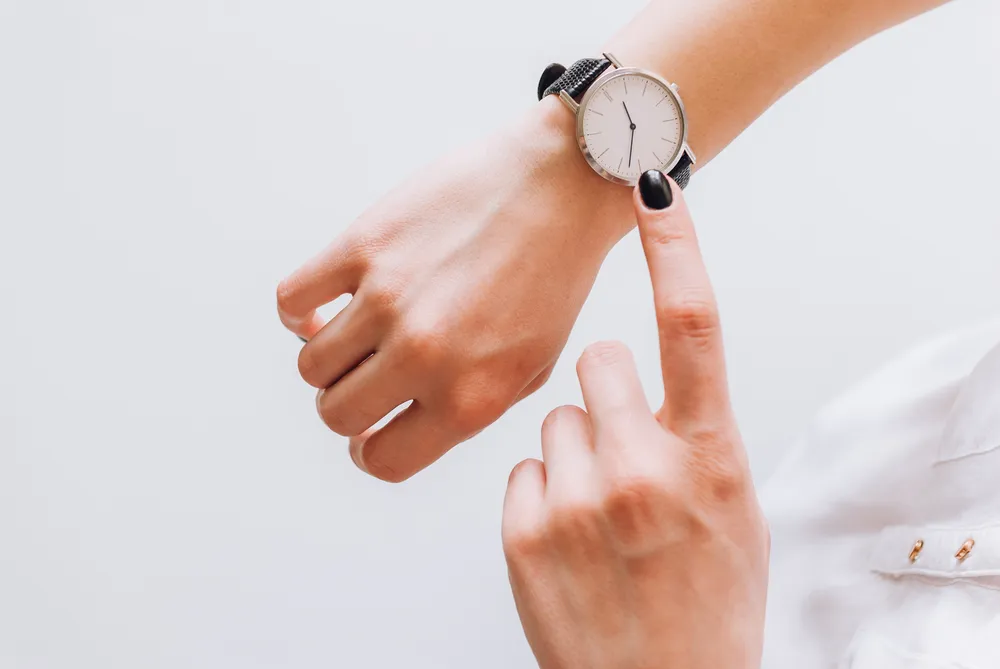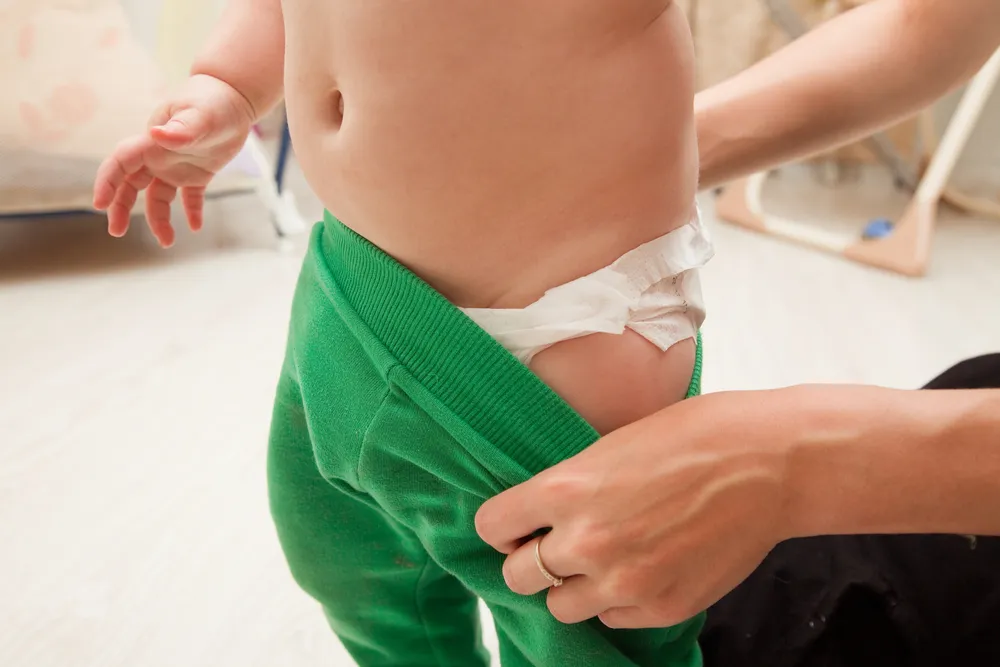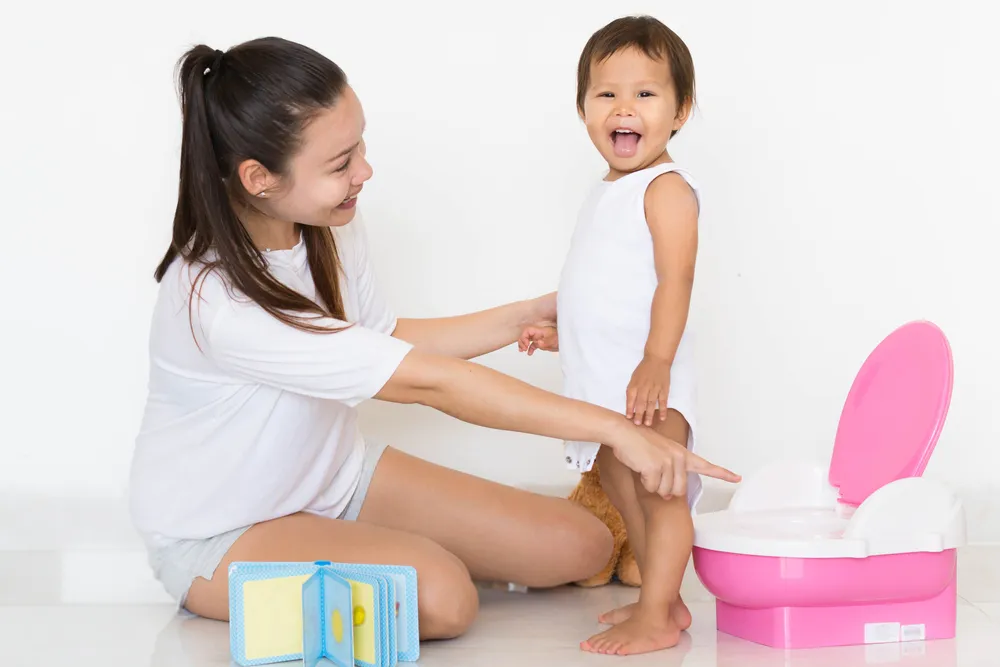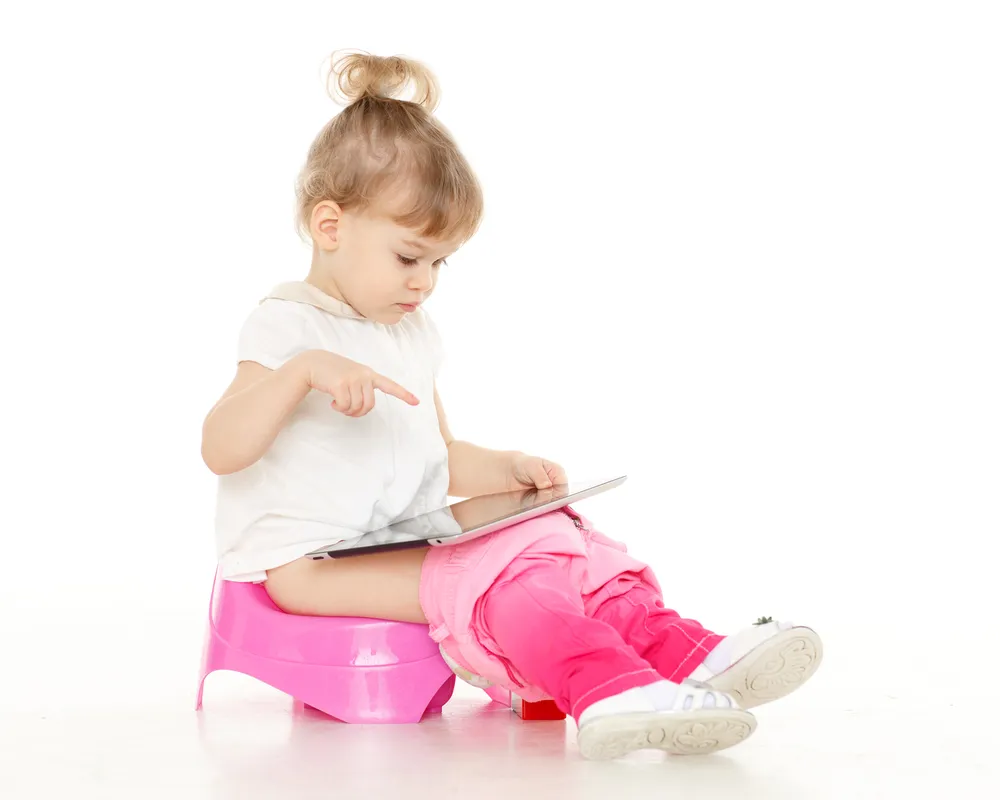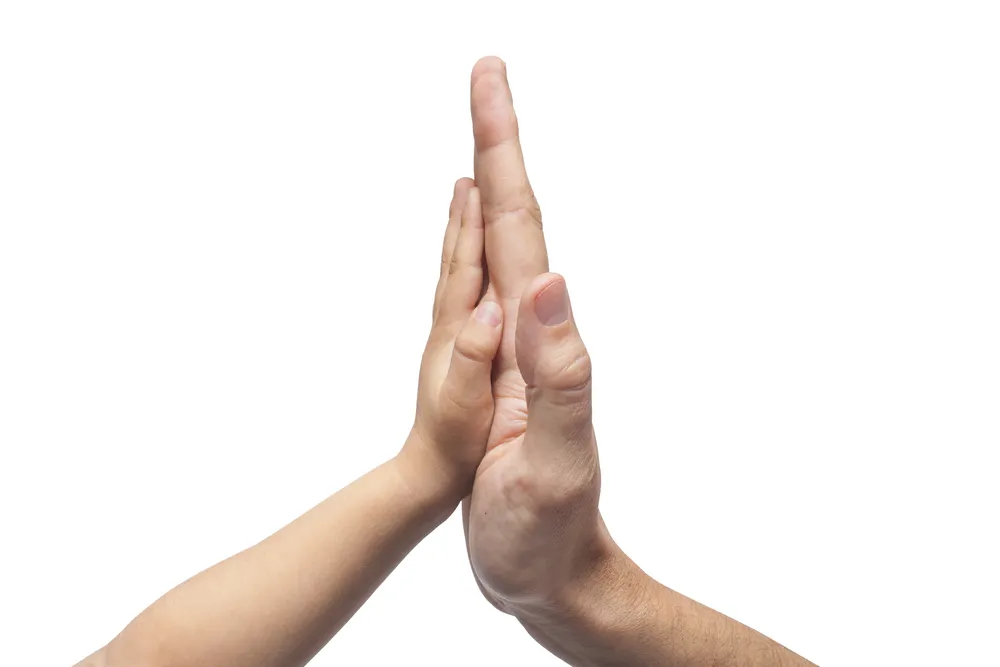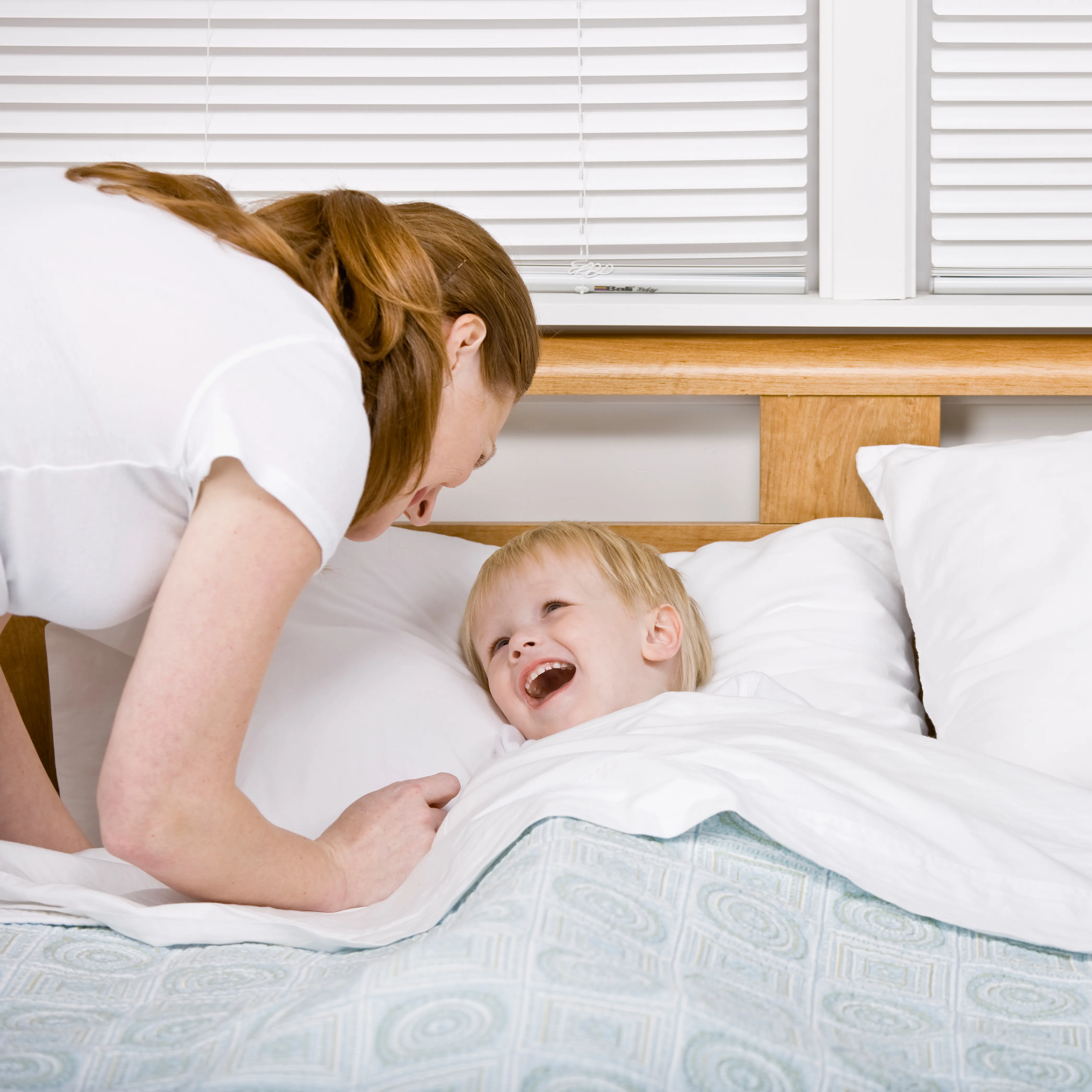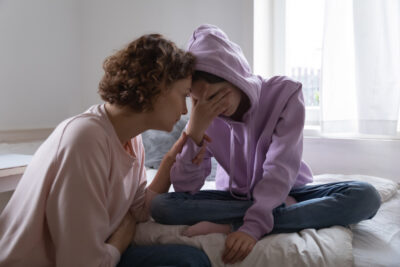Potty training your child requires a lot of time and patience on your part. Getting your little one excited and on board for the change can often be half of the battle. Many parents ask themselves: when should I start potty training? I am not sure there is a right or wrong answer. Every child is different. Some will be asking to ditch their diaper for regular underwear, while others are perfectly content sitting in their own mess! Most healthy children aren’t physically or emotionally ready to start potty training until they are between 18 months and three years old. Boys tend to be ready a few months later than little girls are. Most parents start the training when their child is between two and three years of age. Here are some must-know tips when you begin potty training your little one…
15. Let Them Watch and Learn
Monkey see, monkey do! Toddlers often learn best by imitation! Watching you use the bathroom is a natural first step before they themself make the leap. Little boys and girls may comment on how daddy uses the potty differently than mommy does, which creates the perfect opportunity to explain the basic mechanics! When talking about body parts, don’t shy away from being anatomically precise and calling it what it is — no cutesy names needed! You can also teach them about hygiene — how to wipe and the importance of washing their hands after every trip to the bathroom!
14. Purchase the Right Equipment
There are a variety of options — from child-sized pottys, to child-sized toilet seats that can be placed on the lid of your regular bathroom toilet. Some toddlers fear that they may fall in, and their anxiety can potentially interfere with the potty training. If you do opt for the child-sized seat option, ensure that it attaches securely and won’t slide around, making them feel unstable. Another important consideration to make, is to find something with a urine guard (or a removable one) if you have a little boy! These are very useful for protecting your bathroom floor from stray pee.
13. Help Your Child Get Comfortable with the Potty
Some children need to slowly warm up to the idea of using the potty. Some parents have tried letting their child start by sitting on the toilet with their clothes on — getting used to it before later trying to try it with their pants down. Others have tried letting their favorite stuffed toy sit on the toilet, and go through the motions, allowing your little one to learn by watching and helping as opposed to being told by you what to do. These are great ways to help your little one get in the right mindset!
12. Motivate with Cool Underwear
Some parents like to start their potty training adventure at the store! Going shopping with your little one for some cool underwear, and letting them pick them out might be just what they need to get even more excited about the whole thing. Use this time to talk it up and tell them that they are old enough to wear “real underwear” just like mommy and/or daddy (or their older sibling if they have one). Another transition trick I have heard about is letting them get used to wearing underwear by putting them over their diaper at first, and then ditching the diaper once they get comfy with the underwear.
11. Set Up a Training Schedule
Sometimes having a routine can really help the potty training process. Creating a training schedule can vary greatly on if your child is at home or in daycare — so you will have to cleverly craft something specifically to your situation and coordinate with your childcare provider or teacher, too. There are two methods to consider — the back-and-forth method of switching between diapers and underwear or the cold-turkey method of going to underwear full time. If you try the cold-turkey, it may be best to use a diaper for bedtime or if you plan to be out for a long trip until they get more practice and become well-trained. A common routine for starting them out is by putting them on the potty every 20 minutes, without fail. This can be easier in the beginning since some children are not interested in remembering to go on their own.
10. Dress Them In Comfortable Easy-to-Remove Clothes
Sometimes the time between when they ask to use the toilet and their going might be a bit more rushed than we would want. Make things easier on them and you, by dressing them in loose-fitting, comfortable clothes that can easily be removed when it comes time to use the potty. They may like to pull down their own pants, and go through the motions as we adults would — so find clothing options that would allow this, and will not frustrate them — especially when nature is currently calling!
9. If You Have a Little Boy, Teach Him to Sit, then Stand
Since their bowel movements and urine often come at the same time, it makes sense to start your little boy off sitting for both poops and pees. It might be a bit much to learn about balance and more importantly to the person who cleans your bathroom, how to aim! This way you can get him to concentrate on the task at hand, and later concentrate on mastering the basic standing peeing procedure, but there is no rush to this at all.
8. Make it Fun!
When your little guy is ready to try standing up, throw a couple O-shaped cereal pieces into the potty as target practice — helping them stay focused, and having a bit of fun! Keeping things fun is a much better approach and your child will likely stay more motivated. For little girls (or boys) you might try dropping a few drops of food coloring into the toilet bowl so they can see the water change color as they pee.
7. Don’t Let Them Sit Too Long
I have heard that some parents let their little one sit down, and maybe even watch a little televison while they are trying to go, however this can often be a major stumbling block for parents and children. Instead, let them focus on the task at hand. You should also avoid letting them sit too long. If your child doesn’t go pee or poo after sitting on the toilet for 3-5 minutes, take them off. Sitting on the toilet too long can feel like punishment to little ones, and we don’t want that!
6. Try To Allow For Some Naked Time
Apparently spending some time bottomless is a great way for little ones to figure out when they need to go potty. If you have a child-sized potty, try putting the potty in an easily accessible area and encourage your little one to sit on it at regular intervals. You might want to try doing this outside (weather permitting) and not in a room with an expensive area rug — in case there are any accidents. Keep a close watch on them and pay attention for signs that they have to go (clutching them self, jumping up and down, pressing their legs together) — or whatever their cues may be. The more time your child spends out of diapers, the faster they will learn!
5. Celebrate (and Reward) Triumphs!
No doubt, there will be some accidents along the way, but eventually your little one will get the hang of it. Don’t forget to celebrate the victories, and do what you can to reinforce the significant milestone they successfully reached, and that you are proud of their efforts! In the early learning stages, I have heard that stickers make a great ‘reward’. Something small, and relatively inexpensive is key. Make sure you give the reward as soon as possible after the successful bathroom visit to make a firm association between the behavior and the positive reinforcement. Try not to use food as a reward, as it may reinforce potential bad habits, like having them eat when they aren’t hungry or giving them a sweet treat may teach them that junk food is better than healthier fare. Rewards are okay, but don’t bribe!
4. Don’t Give Up!
When you start to feel frustrated when your child has an accident, remind yourself that scolding them may result in months of diapers ahead. Much like riding a bike, there are bound to be accidents along the way, so we must be mindful of this and remember that it is all a part of the potty training process. Accidents will happen! Don’t overreact or punish them — nothing can disrupt potty training faster than making them feel bad for having an accident. If you find yourself getting increasingly frustrated, take a break and try again in another couple weeks.
3. Night Time Training Will Follow
Once your little one starts to get the hang of things and is successful at staying dry all day, you may start to come up with a game plan for nights. First, you will want them to be reliably using the potty during the daytime, then start checking their diaper in the mornings and after their naps to see if they are dry. Many children start staying dry during their afternoon naps within 6 months of learning to use the potty. The night training obviously takes longer, depending on if they are able to hold their urine for an extended period of time. It can take several months or years before your child’s body is mature enough to stay dry at night, so do not fret! If your little one wants to try to sleeping without diapers, go ahead and let them try. Allow for a few nights of experimenting, but if they aren’t ready, put them back into diapers in a non-judgmental way, and explain their body is not quite ready for the next step, but you will try again soon!
2. Limit Liquids After 5 pm
If you are trying diaper-less nights, support your little ones attempts to stay dry by limiting how much they drink after 5 pm. Before they settle in for the night, do one final trip to the bathroom, and fingers crossed they will have a dry night! If your child successfully stays dry for 3 of 5 trial no-diaper nights, you should be safe to try the ‘underwear-all-the-time’ thing! Again, should they have nighttime accidents — don’t worry! Nighttime accidents are considered normal well into the grade school years!
1. Say Farewell to the Diapers!
This day will come eventually — when you are ready to say goodbye to the diapers for good. Remember every child is different, and every child will experience accidents. So, make sure you stay as calm and patient as possible through the process! Remember to be prepared too! Keep a change of underwear and extra clothing handy for those ‘oops’ moments that we know will happen. When that day finally comes, and you are ready to say goodbye to diapers for good, let your little one — or should I say big boy or big girl — give away any leftover diapers to a younger sibling or another child in need. Let them say that final farewell to diapers, and celebrate this wonderful milestone achievement!
